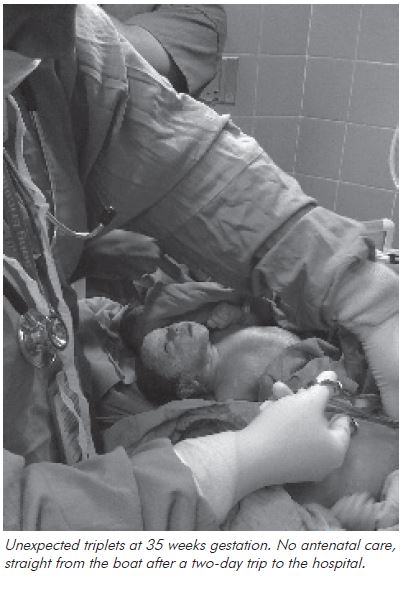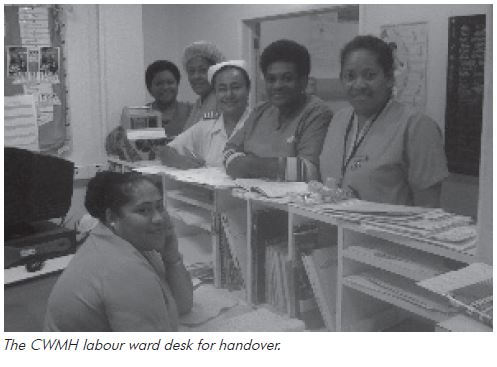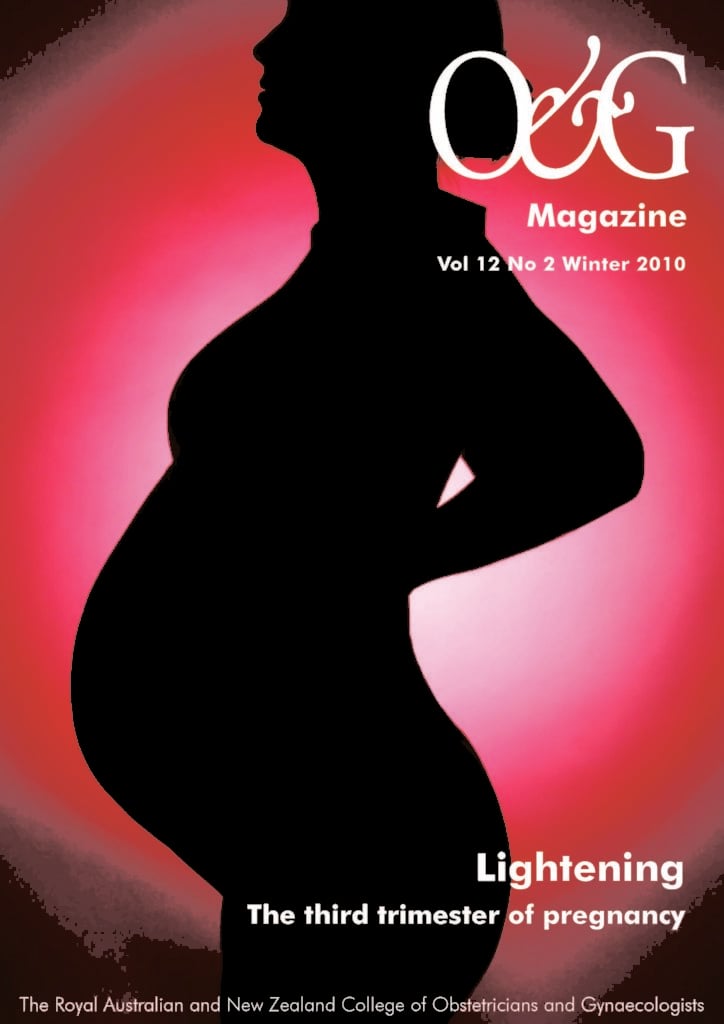Living in the Fiji Islands normally conjures up idyllic tropical island images of sunshine, endless beaches, crystal clear water, great seafood and a lazy lifestyle.
While that may be true for holidaying among the beautiful beaches of the Mamanuca and Yasawa Islands or on Viti Levu’s Coral Coast, life as a medical volunteer in Suva, Fiji, is an equally rewarding but altogether different experience.
From August 2009 to January 2010, we spent six months working and teaching at Fiji’s main hospital in Suva and the affiliated Fiji School of Medicine.
Fiji is one of the most populous South Pacific countries, home to almost 900,000 people among the 110 inhabited islands. Despite being a popular tourist destination, poverty is a major challenge for many Fijians. Fiji is placed ninety-second on the Human Development Index and has a GDP per capita of uS$4121. The nation has an infant mortality rate of 16 per 1000 births, four times greater than Australia, and a maternal mortality of 75 per 100,000 births.
The nation’s capital, Suva, serves as the centre for medical training and receives tertiary referrals for the entire Fiji Islands. The Fiji School of Medicine (www.fsm.ac.fj) has now been training doctors for Fiji and many other South Pacific nations for the last 150 years. Suva also serves as the largest provider of healthcare in the South Pacific through the Colonial War Memorial Hospital (CWMH). Our role was with both the Fiji School of Medicine as lecturers and as clinicians at CWMH.

The CWMH department of obstetrics and gynaecology manages 6500 deliveries each year, all under the supervision of only three very busy fulltime specialists. The labour ward consists of a six-bed ‘first stage’ open room, with four individual rooms for ‘second stage’ management. Most days, the labour ward corridor served as an overflow postnatal ward. The antenatal waiting area was equally often overwhelmed, with many women having travelled more than a couple of days to be seen. Due to poor resources, access and limited education, antenatal bookings commonly occur in the third trimester, with many at first presentation when in labour. Maternal medical diseases such as diabetes, rheumatic heart disease, syphilis, tuberculosis and SLE (systemic lupus erythematosus) were a few of the many medical complications that present among the antenatal population. Preterm labour and PPROM were commonplace, with perinatal outcomes universally very poor at gestational ages under 32 weeks. Despite only a ten per cent caesarean section rate, we still saw more cases of ruptured uterus during our six-month term than during our postgraduate training. Gynaecological presentations commonly included ruptured ectopics (less than two per cent having ultrasounds in the first trimester); pelvic inflammatory disease; tubo ovarian abscesses; extremely large fibroid uteruses and ovarian cysts; and most gynaecological cancer presentations at stage 3 or 4. All registrars learned Wertheim’s hysterectomies.
Daily work in the O and G department was very busy, with significant service commitments competing with training of medical students, Diploma and Masters of O and G registrars. Nonetheless, the enthusiasm of the postgraduate trainees and the desperate need of many of the patients remained the motivator for the occasional 72-hour on-call consultant shifts. Ruptured uteruses, ruptured ectopics, postpartum haemorrhage, antenatal Eisenmenger’s syndrome and complex laparotomies were among the many challenges occurring during on-call shifts. Excellent clinical supervision and collegiate support was always on hand within the O and G department. Sadly, there were six maternal deaths in just our short six-month term.
Anaesthesia offered similar contrasts to practice in Australia. In addition to the O and G theatre workload, CWMH maintains paediatric, general, orthopaedic, plastics, thoracic and urological surgical services, as well as emergency neurosurgical management. These demands were covered by only four operating theatres. The anaesthesia department also managed the six-bed ICU, frequently needing to close elective theatres in order to use anaesthesia monitors for ICU patients.

Many theatre patients suffered complex medical problems impacting both their surgery and anaesthesia. Diabetes and coronary artery disease are growing problems in Fiji and among the younger obstetric population, rheumatic heart disease is not uncommon.
Anaesthesia equipment, monitoring and drug shortages were a common problem, sometimes requiring cancellation of elective theatres. Many of the drugs available were those no longer used for anaesthesia in Australia, nonetheless, it was quite satisfying to be able to deliver a safe and effective anaesthetic using only these older agents. The resourcefulness and skill of the local anaesthesia trainees was impressive, working in an environment far outside the comfort zone of the typical Australian anaesthetist.
Anaesthesia involvement in obstetrics was restricted to theatres and ICU. Labour analgesia was essentially unavailable. Although once used in the past, nitrous oxide had now fallen into disuse on the labour ward due to a lack of training and motivation. Additionally, a lack of staffing and facilities made it impossible to offer a spinal or epidural analgesia service.
Teaching was both the primary focus and the most satisfying aspect of our time while in Fiji. The Fiji School of Medicine trains both undergraduate and postgraduate doctors for the entire South Pacific. Standards are comparable to Australia and New Zealand for undergraduate teaching, while postgraduate teaching relies heavily on expat doctors from Australia, New Zealand and other countries.
In addition to formal tutorials, assignments and exams, a large component of our teaching was clinical; on the wards, in ICU or in theatre. The Fijian and Pacific trainees had a strong thirst for knowledge. The Damocles sword often hanging over Pacific trainees was the looming responsibility of returning once qualified to their native country as the sole obstetrician-gynaecologist or anaesthetist for an entire island nation.
While resource scarcity is an ongoing challenge for Fiji, much has and can be achieved through further education and training. It is easy to forget that many of the advances in modern medical care are the result of changes in practice, knowledge and skills rather than the result of expensive new drugs or equipment. We plan to regularly return to Fiji to continue this journey, as well as build upon the valuable relationships forged with local doctors and further foster links between medicine in the South Pacific and Australia.
Kirsten and Daniel returned to Fiji in August 2010 to run Advanced Life Support in Obstetrics (ALSO) and Obstetric Anaesthesia courses respectively.
The delivery rate at CWMH for the first three months of 2010 saw increasing birth rates, with a rate of 924 in March (projecting to over 10,000 for the year)!






Hi there, is there any possibility of getting in touch with Kirsten? I stumbled into this article and I was working with Kirsten at the time in Fiji. It would be great to get in touch again with her. I was junior registrar training in Fiji at the time and currently doing my fellowship training in Dunedin, NZ. I am hoping to return at some point and develop our Oncology services in Fiji one day. Many thanks. Tema
Hi Tema, thanks for your message. All requests for contact must be via the College, but are always followed up. We have forwarded your message to Kirsten.